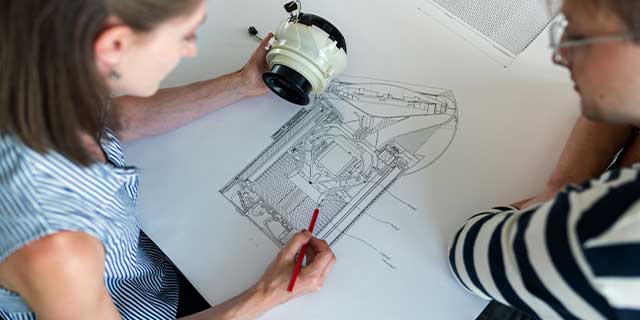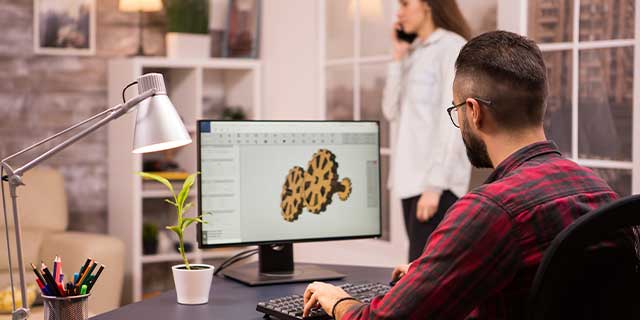
Patent Drawings: How to Draw Your Own
Whenever you need a visual to explain your invention, you need to create a patent drawing. The United States Patent and Trademark Office (USPTO) requires you to provide a drawing of your invention along with your patent applications. Furthermore, it must adhere to its rules. Because of the strict rules, inventors want to know how to patent a drawing.
The drawing must not be an artwork; it describes and demonstrates the invention in the best concise manner. Whatever process you want to use, it has to abide by the rules of USPTO. As stated, patent drawings can be any diagram of the invention, of steps or methods to craft the invention. It is an important aspect of the patent application process.
At times, patent illustration is interchangeably used with patent drawings. Although patent drawings are not compulsory when submitting your application, they can help strengthen your patent application. Considering the crucial role they play, it is essential to understand how to patent a drawing. This article will teach you how to draw your patent drawing without requiring any professional help.
Importance of Patent Drawing in your Patent Application
Unless the patent application relates to a chemical method or compound, you might not require a patent drawing. Nevertheless, if it isn’t required, it is advisable to get one to avoid any unforeseen circumstances. At times, there is a disconnection between what should be included in a patent application and what shouldn’t be. A good patent drawing helps makes describe your patent correctly.
The quickest and easiest means to have your patent application rejected is to provide a broad description of your invention. The more general and broader your invention description, the likely it is for someone to have a related claim. Therefore, ensure you have a detailed patent description. The patent drawing comes in handy and follows any written description. Furthermore, it helps the reader grapes the concept of your invention in the application.
What to include in a Patent Drawing?
Before you start learning how to patent a drawing, it is paramount to know the essentials to include in a patent drawing. Most patent applications have several sheets of drawings and multiple views for each sheet. Peradventure your invention represents a physical object, you need to include different views from each perspective and angle. The drawing should have the bottom, sides, back, front, and top.
Assuming your invention contains several components, you can decide to include the drawings of each component. Drawing processes or methods always includes diagrams and flow charts to make it easier for the reader to understand the processes involved. When you don’t know what to include in your drawing, it is advisable to provide comprehensive details instead of having a little information.
How to Patent a Drawing – Steps to obtaining the Drawings?
To obtain your drawings, you have three ways possible. You can use any of the methods below to make your patent drawing.
Do it yourself
This might not be the optimal option, especially if you are an unskilled illustrator. However, if you are an expert, you can easily represent your drawing visually. Doing it yourself is the best cost-effective method you can take to make your patent drawing. In addition, you can take a snapshot of your invention and trace the photo on paper.
Nevertheless, it is great drawing your invention, but you should give it to an expert to review to ensure it meets USPTO requirements. A patent attorney can help you checklist the requirement and ensure it meets every requirement.
Computer Assisted Drawings (CAD)
You can use CAD software to create patent illustrations. It is an easy option to create professional drawings of your invention. You don’t require any artistic skills to create your patent drawing. However, the software is expensive if you want to purchase it. Some CAD software allows you to subscribe on a particular timeframe. In addition, some of these programs allow scanning a photo before converting it into a patent drawing.
Patent Illustrators
The last way to patent a drawing is by using patent illustrators. This option is suitable if you don’t have any visual art skills. While you can use CAD software, it can be intimidating to understand the platform. Fortunately, you can get professional assistance to get your drawing perfected. Patent illustrators can provide the best way to represent your invention.
An important reason to use a patent illustrator is that they understand USPTO requirements and add value to several illustration methods. Depending on your location and invention, an illustrator can charge as low as a hundred dollars per page. Note that patent attorneys don’t prepare the patent drawing. Their job is to oversee your application process. A patent attorney would require a patent illustrator to check the work in most situations.
Best Time to File a Patent Drawing
Technically, you can file a non-provisional patent application without a patent drawing. However, it is not advisable because it makes your patent application unprofessional. After filing your application, you can add drawings. Nevertheless, several patent laws have rigorous restrictions, especially when adding something new to your application.
The patent drawing represents your best tool to ensure your invention is adequately understood. Therefore, you should submit them during the initial patent application as they help protect your invention against a similar invention. In addition, courts look for submitted patent drawings as evidence of the inventor’s skill. It means a good drawing of your invention makes it harder for anyone to claim they didn’t understand your application.
Understanding Informal Patent Drawing
In your quest to know how to patent a drawing, you must understand informal and formal drawing. You can submit your drawing to the USPTO as informal in two different ways. Remember, you can start your drawings as hand-drawn figures, charts, and sketches.
These sketches, diagrams, photos, or rough drawings can be submitted to the USPTO while filing your patent application. It’s preferable to send as many sketches as possible, especially for non-provisional patent applications. Concerning submitting a non-provisional application, you need to submit formal drawings. In a formal drawing, everything makes sense since all the details show different aspects of the invention.
Hiring a Professional Patent Drawing Expert
In learning how to patent a drawing, you have several options for drafting your invention. As already discussed, you can do it yourself or get a computer-aided program to draw your invention. However, both options are not the best route to follow, especially if you have no artistic skill or knowledge.
Nowadays, most inventors prefer hiring a professional patent drawer to prepare their patent drawings. It’s more easier to get their services since they are available online. Interestingly, the advantage of hiring a professional instead of doing it yourself is enormous.
Firstly, a professional patent illustrator understands everything that should be included and shouldn’t be there. They can visually describe your invention so that USPTO will accept it since it meets the laydown requirements.
Secondly, for inventors that don’t have the time to draft a patent drawing, using a professional helps save you time. In addition, the task of doing it yourself can be complicated and time-consuming. Therefore, hiring a professional to handle all your patent application processes, including the patent drawing, is the best way to get your application accepted as soon as possible.
Conclusion
How to patent a drawing isn’t quite complicated, especially if you follow the processes enlisted in this article. Getting your patent drawing for that invention is critical to protecting your idea. When you want to draw a patent, you have several options available. You can decide to do it yourself, use CAD software, or hire a professional company. Overall, the best option is to contact a professional patent company to handle your patent drawing because they understand every requirement set by USPTO. Explore the capabilities of our depot management software designed to enhance operational efficiency.
If you need a reputable company with the experience and professionals to handle your patent drawing, GloberDesign is the solution. They offer a fast, cost-effective, and reliable patent drawing. Get your invention secured by hiring the best company that places your interest at the forefront.



